Industrial Casting
-

Cast aluminum elbow
An overview of the
Is a pure aluminum or aluminum alloy ingot prepared according to the standard composition ratio, after artificial heating into aluminum alloy liquid or molten state and then through the professional mold or the corresponding process of aluminum liquid or molten aluminum alloy pouring into the cavity, after cooling to form the required shape of aluminum parts.
The aluminum used in casting aluminum is called: cast aluminum alloy.Common methods of aluminum casting are: sand casting, die casting, low pressure casting, precision casting, permanent mold casting and so on.
-
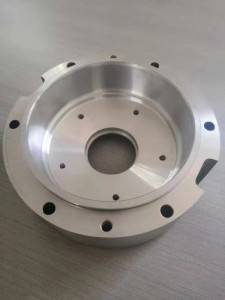
Cast aluminum flange sleeve
An overview
Is a pure aluminum or aluminum alloy ingot prepared according to the standard composition ratio, after artificial heating into aluminum alloy liquid or molten state and then through the professional mold or the corresponding process of aluminum liquid or molten aluminum alloy pouring into the cavity, after cooling to form the required shape of aluminum parts.
The aluminum used in casting aluminum is called: cast aluminum alloy.Common methods of aluminum casting are: sand casting, die casting, low pressure casting, precision casting, permanent mold casting and so on.
-
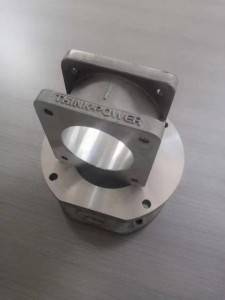
Cast aluminum interface
An overview of the
Is a pure aluminum or aluminum alloy ingot prepared according to the standard composition ratio, after artificial heating into aluminum alloy liquid or molten state and then through the professional mold or the corresponding process of aluminum liquid or molten aluminum alloy pouring into the cavity, after cooling to form the required shape of aluminum parts.
The aluminum used in casting aluminum is called: cast aluminum alloy.Common methods of aluminum casting are: sand casting, die casting, low pressure casting, precision casting, permanent mold casting and so on.
-

Cast aluminum over
An overview of the
Is a pure aluminum or aluminum alloy ingot prepared according to the standard composition ratio, after artificial heating into aluminum alloy liquid or molten state and then through the professional mold or the corresponding process of aluminum liquid or molten aluminum alloy pouring into the cavity, after cooling to form the required shape of aluminum parts.
The aluminum used in casting aluminum is called: cast aluminum alloy.Common methods of aluminum casting are: sand casting, die casting, low pressure casting, precision casting, permanent mold casting and so on.
-
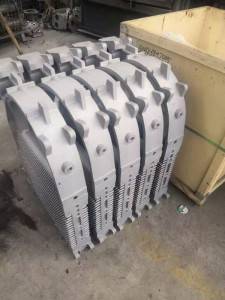
Cast aluminum radiator
An overview of the
Is a pure aluminum or aluminum alloy ingot prepared according to the standard composition ratio, after artificial heating into aluminum alloy liquid or molten state and then through the professional mold or the corresponding process of aluminum liquid or molten aluminum alloy pouring into the cavity, after cooling to form the required shape of aluminum parts.
The aluminum used in casting aluminum is called: cast aluminum alloy.Common methods of aluminum casting are: sand casting, die casting, low pressure casting, precision casting, permanent mold casting and so on.
-
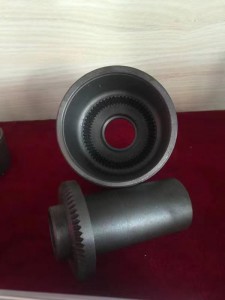
Cast iron conical gear
Cast iron is an alloy consisting mainly of iron, carbon, and silicon.
In these alloys, the carbon content exceeds the amount that can be retained in austenite solid solution at eutectic temperature.
Cast iron is an iron-carbon alloy with a carbon content greater than 2.11% (generally 2.5 ~ 4%).It is a multi-element alloy with iron, carbon and silicon as the main component elements and contains more manganese, sulfur, phosphorus and other impurities than carbon steel.Sometimes in order to improve the mechanical properties of cast iron or physical, chemical properties, but also add a certain amount of alloy elements, alloy cast iron.
As early as the sixth century BC age period, China has begun to use cast iron, than European countries nearly two thousand years earlier.Cast iron is still one of the most important materials in industrial production.
oneAccording to the form of carbon present in cast iron, cast iron can be divided into
1.White cast iron except for a few soluble in ferrite, the rest of the carbon in the form of cementite exists in cast iron, its fracture is silver-white, so called white cast iron.White cast iron is mainly used as raw material for steelmaking and blank for producing malleable cast iron.
2.Gray cast iron carbon all or most of the flake graphite exists in the cast iron, its fracture is dark gray, so called gray cast iron.
3.Part of the carbon of hemp cast iron exists in the form of graphite, which is similar to gray cast iron.The other part is in the form of free cementite similar to white cast iron.The black and white pitting in the fracture, so called hemp cast iron.This type of cast iron also has greater hardness and brittleness, so it is rarely used in the industry.
twoAccording to the different graphite morphology in cast iron, cast iron can be divided into
1.The graphite in gray cast iron is flake.
2.The graphite in malleable cast iron is flocculent.It is obtained from certain white cast iron after annealing at high temperature for a long time.Its mechanical properties (especially toughness and plasticity) are higher than gray cast iron, so it is commonly called malleable cast iron.
3.The graphite in nodular cast iron is spherical.It is obtained by spheroidizing treatment before pouring molten iron.This kind of cast iron not only has higher mechanical properties than gray cast iron and malleable cast iron, but also has a simpler production process than malleable cast iron. Moreover, its mechanical properties can be further improved through heat treatment, so it is increasingly widely used in production.
-
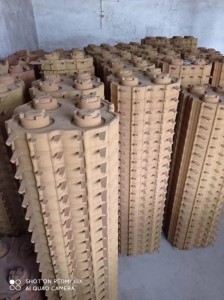
Cast iron coated sand shell
Cast iron is an alloy consisting mainly of iron, carbon, and silicon.
In these alloys, the carbon content exceeds the amount that can be retained in austenite solid solution at eutectic temperature.
Cast iron is an iron-carbon alloy with a carbon content greater than 2.11% (generally 2.5 ~ 4%).It is a multi-element alloy with iron, carbon and silicon as the main component elements and contains more manganese, sulfur, phosphorus and other impurities than carbon steel.Sometimes in order to improve the mechanical properties of cast iron or physical, chemical properties, but also add a certain amount of alloy elements, alloy cast iron.
As early as the sixth century BC age period, China has begun to use cast iron, than European countries nearly two thousand years earlier.Cast iron is still one of the most important materials in industrial production.
oneAccording to the form of carbon present in cast iron, cast iron can be divided into
1.White cast iron except for a few soluble in ferrite, the rest of the carbon in the form of cementite exists in cast iron, its fracture is silver-white, so called white cast iron.White cast iron is mainly used as raw material for steelmaking and blank for producing malleable cast iron.
2.Gray cast iron carbon all or most of the flake graphite exists in the cast iron, its fracture is dark gray, so called gray cast iron.
3.Part of the carbon of hemp cast iron exists in the form of graphite, which is similar to gray cast iron.The other part is in the form of free cementite similar to white cast iron.The black and white pitting in the fracture, so called hemp cast iron.This type of cast iron also has greater hardness and brittleness, so it is rarely used in the industry.
twoAccording to the different graphite morphology in cast iron, cast iron can be divided into
1.The graphite in gray cast iron is flake.
2.The graphite in malleable cast iron is flocculent.It is obtained from certain white cast iron after annealing at high temperature for a long time.Its mechanical properties (especially toughness and plasticity) are higher than gray cast iron, so it is commonly called malleable cast iron.
3.The graphite in nodular cast iron is spherical.It is obtained by spheroidizing treatment before pouring molten iron.This kind of cast iron not only has higher mechanical properties than gray cast iron and malleable cast iron, but also has a simpler production process than malleable cast iron. Moreover, its mechanical properties can be further improved through heat treatment, so it is increasingly widely used in production.
-
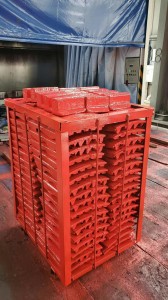
Cast iron plate
Cast iron is an alloy consisting mainly of iron, carbon, and silicon.
In these alloys, the carbon content exceeds the amount that can be retained in austenite solid solution at eutectic temperature.
Cast iron is an iron-carbon alloy with a carbon content greater than 2.11% (generally 2.5 ~ 4%).It is a multi-element alloy with iron, carbon and silicon as the main component elements and contains more manganese, sulfur, phosphorus and other impurities than carbon steel.Sometimes in order to improve the mechanical properties of cast iron or physical, chemical properties, but also add a certain amount of alloy elements, alloy cast iron.
As early as the sixth century BC age period, China has begun to use cast iron, than European countries nearly two thousand years earlier.Cast iron is still one of the most important materials in industrial production.
oneAccording to the form of carbon present in cast iron, cast iron can be divided into
1.White cast iron except for a few soluble in ferrite, the rest of the carbon in the form of cementite exists in cast iron, its fracture is silver-white, so called white cast iron.White cast iron is mainly used as raw material for steelmaking and blank for producing malleable cast iron.
2.Gray cast iron carbon all or most of the flake graphite exists in the cast iron, its fracture is dark gray, so called gray cast iron.
3.Part of the carbon of hemp cast iron exists in the form of graphite, which is similar to gray cast iron.The other part is in the form of free cementite similar to white cast iron.The black and white pitting in the fracture, so called hemp cast iron.This type of cast iron also has greater hardness and brittleness, so it is rarely used in the industry.
twoAccording to the different graphite morphology in cast iron, cast iron can be divided into
1.The graphite in gray cast iron is flake.
2.The graphite in malleable cast iron is flocculent.It is obtained from certain white cast iron after annealing at high temperature for a long time.Its mechanical properties (especially toughness and plasticity) are higher than gray cast iron, so it is commonly called malleable cast iron.
3.The graphite in nodular cast iron is spherical.It is obtained by spheroidizing treatment before pouring molten iron.This kind of cast iron not only has higher mechanical properties than gray cast iron and malleable cast iron, but also has a simpler production process than malleable cast iron. Moreover, its mechanical properties can be further improved through heat treatment, so it is increasingly widely used in production.
-

Cast iron buckle
Cast iron is an alloy consisting mainly of iron, carbon, and silicon.
In these alloys, the carbon content exceeds the amount that can be retained in austenite solid solution at eutectic temperature.
Cast iron is an iron-carbon alloy with a carbon content greater than 2.11% (generally 2.5 ~ 4%).It is a multi-element alloy with iron, carbon and silicon as the main component elements and contains more manganese, sulfur, phosphorus and other impurities than carbon steel.Sometimes in order to improve the mechanical properties of cast iron or physical, chemical properties, but also add a certain amount of alloy elements, alloy cast iron.
As early as the sixth century BC age period, China has begun to use cast iron, than European countries nearly two thousand years earlier.Cast iron is still one of the most important materials in industrial production.
oneAccording to the form of carbon present in cast iron, cast iron can be divided into
1.White cast iron except for a few soluble in ferrite, the rest of the carbon in the form of cementite exists in cast iron, its fracture is silver-white, so called white cast iron.White cast iron is mainly used as raw material for steelmaking and blank for producing malleable cast iron.
2.Gray cast iron carbon all or most of the flake graphite exists in the cast iron, its fracture is dark gray, so called gray cast iron.
3.Part of the carbon of hemp cast iron exists in the form of graphite, which is similar to gray cast iron.The other part is in the form of free cementite similar to white cast iron.The black and white pitting in the fracture, so called hemp cast iron.This type of cast iron also has greater hardness and brittleness, so it is rarely used in the industry.
twoAccording to the different graphite morphology in cast iron, cast iron can be divided into
1.The graphite in gray cast iron is flake.
2.The graphite in malleable cast iron is flocculent.It is obtained from certain white cast iron after annealing at high temperature for a long time.Its mechanical properties (especially toughness and plasticity) are higher than gray cast iron, so it is commonly called malleable cast iron.
3.The graphite in nodular cast iron is spherical.It is obtained by spheroidizing treatment before pouring molten iron.This kind of cast iron not only has higher mechanical properties than gray cast iron and malleable cast iron, but also has a simpler production process than malleable cast iron. Moreover, its mechanical properties can be further improved through heat treatment, so it is increasingly widely used in production.
